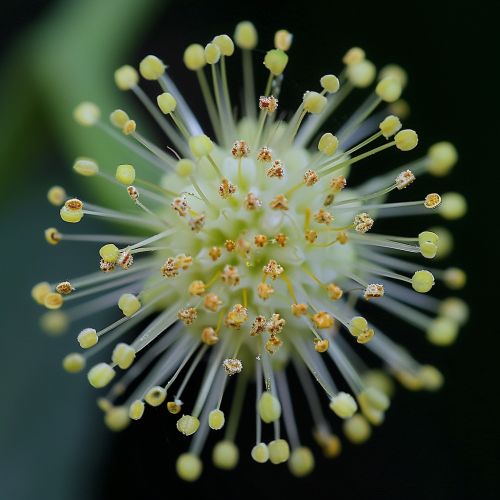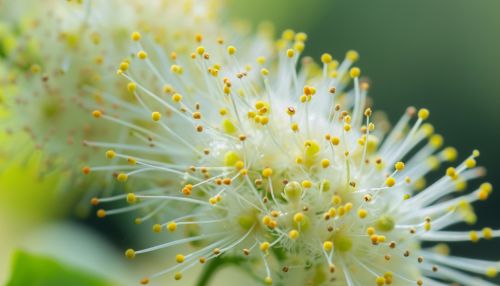Mimosoideae
Introduction
The subfamily Mimosoideae is a diverse and ecologically significant group within the family Fabaceae, commonly known as the legume, pea, or bean family. This subfamily is characterized by its unique floral structures and complex symbiotic relationships with nitrogen-fixing bacteria. Mimosoideae includes a wide range of species, from small herbaceous plants to large trees, and is distributed across tropical and subtropical regions worldwide.
Taxonomy and Classification
Mimosoideae is one of the three subfamilies within Fabaceae, alongside Caesalpinioideae and Papilionoideae. The classification of Mimosoideae has undergone significant revisions, with molecular phylogenetic studies playing a crucial role in understanding its evolutionary relationships. The subfamily is divided into several tribes, including Mimoseae, Acacieae, and Ingeae, each containing numerous genera and species.
Tribes and Genera
The tribe Mimoseae is notable for its genera such as Mimosa, which includes the well-known sensitive plant (Mimosa pudica). The Acacieae tribe is dominated by the genus Acacia, which comprises species like the Australian wattle (Acacia pycnantha). The Ingeae tribe includes genera such as Inga and Calliandra, known for their ornamental and ecological importance.
Morphology
Mimosoideae exhibits a wide range of morphological diversity, particularly in its floral structures. The flowers are typically small, actinomorphic, and arranged in dense inflorescences such as spikes, racemes, or heads. The stamens are often numerous and conspicuous, contributing to the characteristic fluffy appearance of the inflorescences.
Leaves
The leaves of Mimosoideae are usually bipinnate, a feature that distinguishes them from other subfamilies within Fabaceae. Each leaf is composed of multiple pairs of pinnae, which in turn bear numerous leaflets. This complex leaf structure is an adaptation to maximize photosynthetic efficiency in various environmental conditions.
Flowers and Inflorescences
The flowers of Mimosoideae are typically small and aggregated into inflorescences. The calyx and corolla are usually fused, forming a tubular structure. The stamens are often numerous and free, extending beyond the corolla and giving the flowers a distinctive appearance. The inflorescences can be globular, cylindrical, or spike-like, depending on the species.


Ecology and Distribution
Mimosoideae species are predominantly found in tropical and subtropical regions, with a significant presence in Africa, Asia, Australia, and the Americas. These plants occupy a variety of habitats, including rainforests, savannas, and arid regions. Their ability to form symbiotic relationships with nitrogen-fixing bacteria allows them to thrive in nutrient-poor soils.
Symbiosis with Nitrogen-Fixing Bacteria
One of the key ecological roles of Mimosoideae is their symbiotic relationship with nitrogen-fixing bacteria, particularly those in the genus Rhizobium. This symbiosis involves the formation of root nodules, where bacteria convert atmospheric nitrogen into a form that the plant can utilize. This process enhances soil fertility and supports the growth of other plant species in the ecosystem.
Pollination and Seed Dispersal
Mimosoideae species exhibit a variety of pollination mechanisms, including entomophily (insect pollination) and anemophily (wind pollination). The flowers often produce nectar and have specialized structures to attract pollinators such as bees, butterflies, and birds. Seed dispersal mechanisms are equally diverse, ranging from explosive dehiscence to animal-mediated dispersal.
Economic and Cultural Importance
Mimosoideae species have significant economic and cultural value. They are used in traditional medicine, agriculture, and horticulture. Many species are cultivated for their timber, gum, and ornamental qualities.
Timber and Non-Timber Products
Several Mimosoideae species produce valuable timber, including Acacia and Inga. The wood is used for construction, furniture, and fuel. Non-timber products such as gum arabic, derived from Acacia senegal, are important in the food and pharmaceutical industries.
Traditional Medicine
Mimosoideae species have a long history of use in traditional medicine. For example, Mimosa pudica is known for its wound-healing and anti-inflammatory properties. Various parts of these plants, including leaves, bark, and roots, are used to treat ailments ranging from infections to digestive disorders.
Conservation and Threats
Despite their ecological and economic importance, many Mimosoideae species face threats from habitat loss, over-exploitation, and climate change. Conservation efforts are essential to protect these species and their habitats.
Habitat Loss and Fragmentation
Deforestation and land conversion for agriculture are major threats to Mimosoideae species. Habitat fragmentation reduces genetic diversity and disrupts ecological interactions, making species more vulnerable to extinction.
Climate Change
Climate change poses a significant threat to Mimosoideae species, particularly those in sensitive ecosystems. Changes in temperature and precipitation patterns can affect flowering times, pollinator interactions, and the distribution of species.
Research and Future Directions
Ongoing research on Mimosoideae focuses on various aspects, including taxonomy, phylogenetics, ecology, and conservation. Advances in molecular techniques and bioinformatics are providing new insights into the evolutionary history and genetic diversity of this subfamily.
Molecular Phylogenetics
Molecular phylogenetic studies have revolutionized our understanding of Mimosoideae relationships. DNA sequencing and comparative genomics are helping to resolve taxonomic ambiguities and uncover evolutionary patterns.
Ecological Studies
Ecological research on Mimosoideae explores their roles in ecosystem functioning, including nutrient cycling, habitat provision, and interactions with other organisms. These studies are crucial for developing effective conservation strategies.
